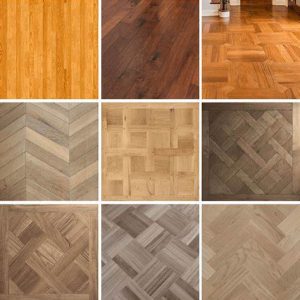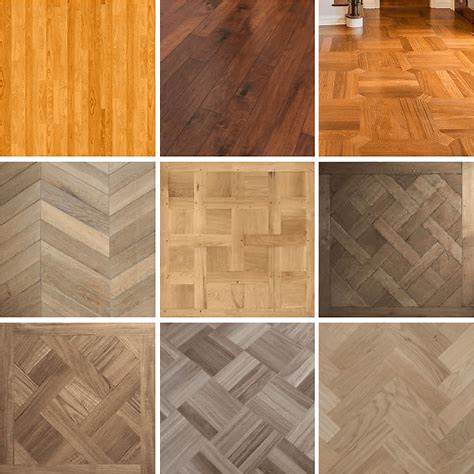
Hardwood floors, a timeless investment in your home’s aesthetic, require diligent maintenance to preserve their beauty and longevity. This guide delves into the diverse methods of hardwood floor maintenance, from daily routines to periodic deep cleaning and restoration, ensuring your floors remain a source of pride for years to come.
I. Daily and Weekly Maintenance: The Foundation of Longevity
- A. Dry Cleaning: The First Line of Defense
- Microfiber Dust Mopping:
- The microfiber dust mop is indispensable for daily maintenance. Its electrostatic properties attract and trap dust, dirt, and pet hair efficiently.
- Use long, sweeping motions, following the wood grain, to minimize scratches and prevent debris buildup.
- Regular dry mopping prevents abrasive particles from damaging the finish.
- Soft-Bristle Brooming:
- For quick sweeps, a soft-bristle broom is suitable. Ensure the bristles are gentle to avoid scratching.
- Sweep in the direction of the grain, preventing debris from settling between planks.
- Vacuuming:
- A vacuum with a soft brush attachment is ideal for removing larger debris, pet hair, and crumbs.
- Crucially, avoid vacuums with beater bars, which can damage the finish.
- Handheld vacuums are useful for quick spot cleaning.
- Microfiber Dust Mopping:
- B. Damp Mopping: Periodic Deep Cleaning
- Controlled Moisture:
- Damp mopping should be performed periodically, not daily. Excessive moisture can damage hardwood.
- Use a microfiber mop wrung thoroughly to be only slightly damp.
- Hardwood-Specific Cleaners:
- Use pH-neutral cleaners designed for hardwood floors. Avoid harsh chemicals, ammonia, or oil soaps.
- Dilute the cleaner according to the manufacturer’s instructions.
- Grain Following Technique:
- Mop in the direction of the wood grain to prevent streaks and ensure a uniform clean.
- Immediate Drying:
- Dry any remaining damp spots immediately with a clean, dry cloth.
- Controlled Moisture:
II. Periodic Maintenance: Restoring and Protecting
- A. Recoating: Refreshing the Finish
- Purpose:
- Recoating involves applying a fresh layer of finish to the floor, restoring its protective barrier and shine.
- This is less invasive than refinishing.
- Frequency:
- The frequency depends on traffic and wear, typically every 3-5 years.
- Professional Application:
- Recoating is best performed by a professional to ensure a smooth, even finish.
- Purpose:
- B. Refinishing: A Complete Overhaul
- Purpose:
- Refinishing involves sanding down the existing finish and applying a new stain and finish.
- This is necessary when the finish is heavily damaged or worn, or when a color change is desired.
- Professional Expertise:
- Refinishing is a complex process that should only be performed by experienced professionals.
- Purpose:
- C. Deep Cleaning: Removing Built-Up Grime
- Professional Cleaning:
- Periodically, consider professional deep cleaning to remove built-up dirt, grime, and residue.
- Professional cleaning uses specialized equipment and techniques.
- Revitalizing Products:
- Use high-quality revitalizing products designed for hardwood floors to enhance their shine and protect the finish.
- Professional Cleaning:
III. Preventative Measures: Minimizing Damage
- A. Mats and Rugs: Protecting High-Traffic Areas
- Entrance Mats:
- Place mats at entrances to trap dirt and moisture.
- Area Rugs:
- Use area rugs in high-traffic areas and under furniture to protect the floor from scratches and wear.
- Entrance Mats:
- B. Furniture Protection: Felt Pads and Glides
- Felt Pads:
- Attach felt pads to the legs of all furniture to prevent scratches and dents when moving.
- Furniture Glides:
- For heavy furniture, consider using furniture glides.
- Felt Pads:
- C. Pet Care: Minimizing Scratches and Spills
- Trimmed Nails:
- Keep pet nails trimmed to minimize scratches.
- Mats Under Bowls:
- Place mats under pet food and water bowls to prevent spills and moisture damage.
- Trimmed Nails:
- D. Humidity Control: Preventing Warping and Cracking
- Hygrometer Monitoring:
- Maintain a consistent relative humidity level between 35% and 55% using a hygrometer.
- Humidifiers/Dehumidifiers:
- Employ humidifiers or dehumidifiers as needed to regulate humidity.
- Hygrometer Monitoring:
- E. Sunlight Protection: Preventing Fading
- Curtains and Blinds:
- Use curtains or blinds to shield the floor from direct sunlight.
- UV-Blocking Window Film:
- Consider UV blocking window film.
- Curtains and Blinds:
IV. Product Recommendations (for Maintenance):
- Bona Hardwood Floor Cleaning Kit:
- Provides a complete set of tools and cleaners for effective hardwood floor maintenance.
- Furniture Felt Pads:
- Prevents scratches and damage from furniture.
- Search amazon for “furniture felt pads”.
- Hygrometer:
- To properly monitor humidity levels.
- Search amazon for “hygrometer”.
Conclusion:
Hardwood floor maintenance is a multifaceted process that involves daily cleaning, periodic treatments, and preventative measures. By adhering to these methods, you can ensure your hardwood floors maintain their beauty and longevity, enhancing the aesthetic appeal and value of your home for years to come.
